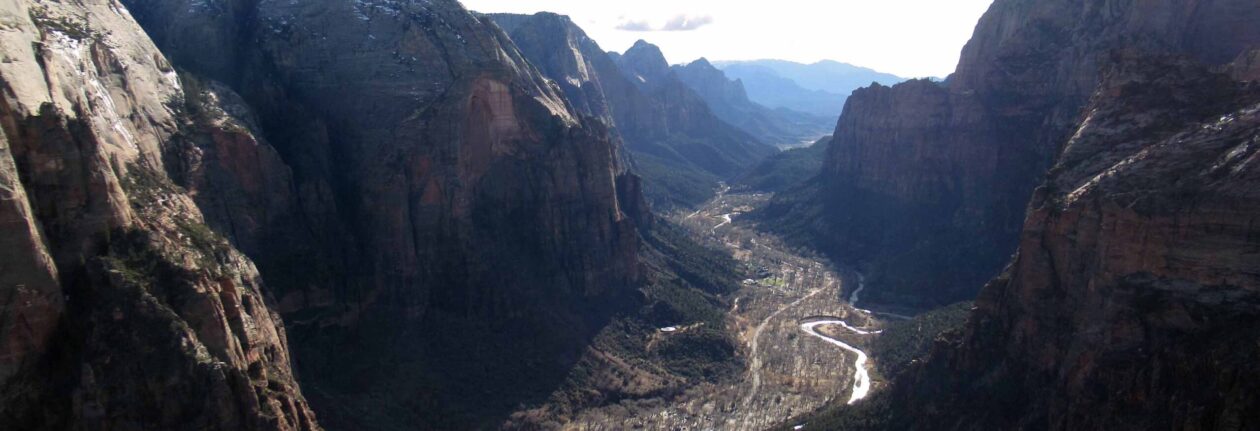Split, Croatia
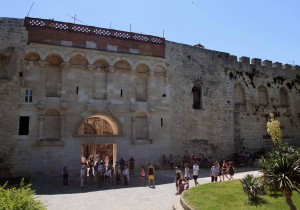
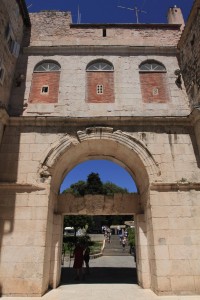
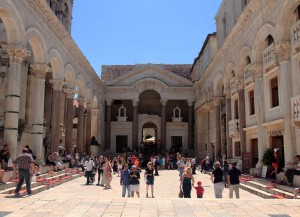
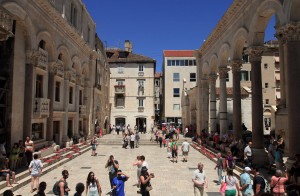
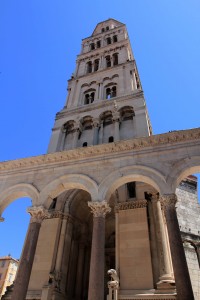
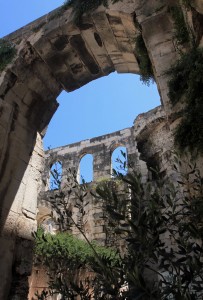
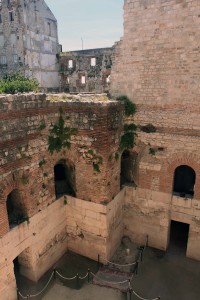
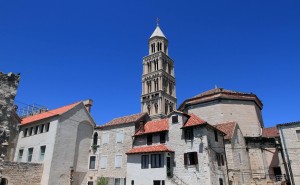
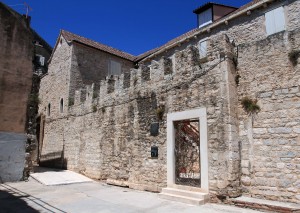
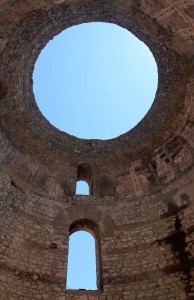
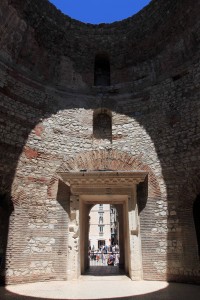
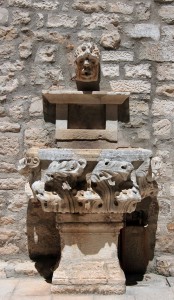
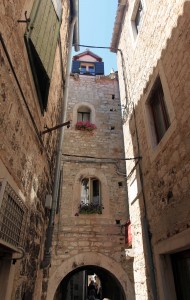
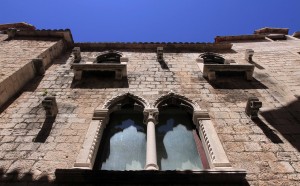
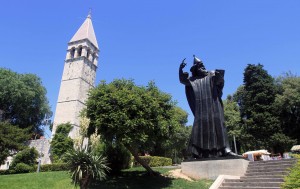
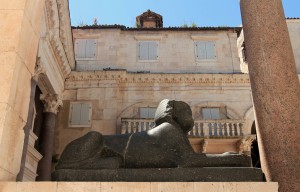
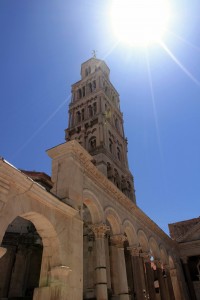
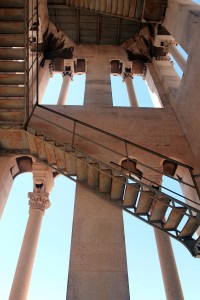
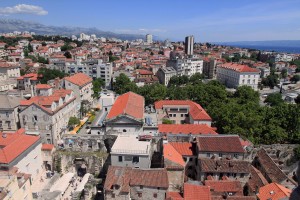
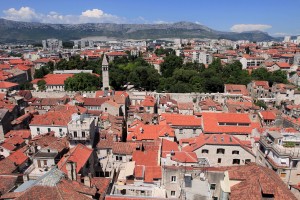
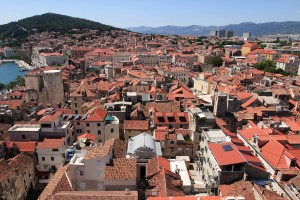
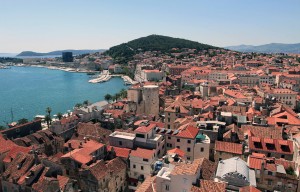
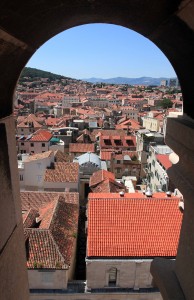
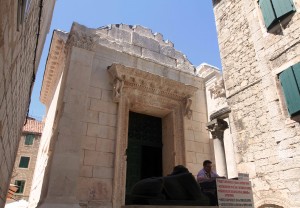
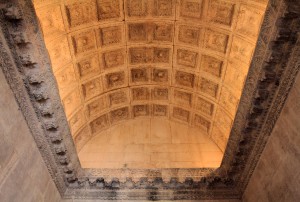
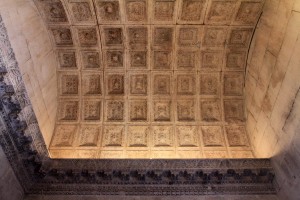
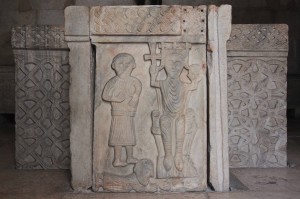
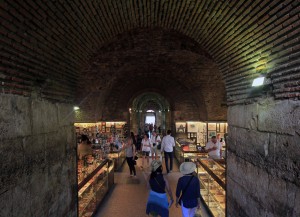
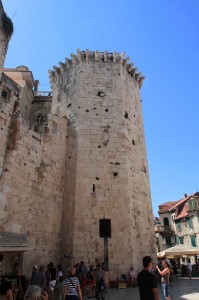
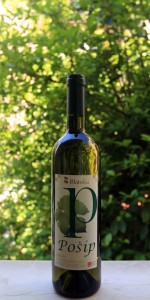
I woke up at 10:00 today, showered, dressed, had a cup of coffee, and then hung around the hostel until 11:40. I then exited the hostel and walked to the Golden Gate (the northern entrance) at Diocletian’s Palace, where a walking tour was scheduled to begin at 12:00. I reached the gate and waited for the tour guide to show up (she was just finishing up the 10:00 tour); shortly after 12:00, I bought a ticket for the walking tour and then joined the rest of the group (many had bought their tickets earlier). We walked through the Golden Gate and in to the Peristyle (the central square of the Palace), next to the Bell Tower for the Cathedral of Saint Domnius (the Cathedral’s structure was originally built in 305 AD as the Mausoleum of Diocletian (the Roman emperor who was born to a family of low status in the Roman province of Dalmatia and who reigned from 284 to 305 AD; he was also the first Roman emperor to abdicate his throne, thus sparing him from assassination and allowing him to live to 311 AD); although his body was removed from his mausoleum after Christianity swept through the region – he was a big time persecutor of Christians, so most likely his body was taken and destroyed as a type of vengeance). In the Peristyle, there was also a 3500-year old Egyptian granite sphinx with its head still intact (all other sphinxes in Split had their heads removed by the early Christians), that was brought to the palace from Emperor Diocletian’s campaigns in Egypt. Next, we walked to where the old thermae (Roman bathhouses were located) and viewed the fragments of mosaics still on display. Then we walked to a garden full of old Roman stone artifacts next to a building that was using a Corinthian column capital as a coffee table. Then we walked around the Cathedral of Saint Domnius to an open area where we could look down to the old palace’s cellars. Next, we walked through the old dining room of the palace and on toward the Ethnographic Museum. Our tour guide then led us in to the Vestibule (a large structure with a circular opening to allow sunlight in; this is also where the Emperor would address the masses on particular days of the year, when the sun shone directly through and lit up the (originally) golden area, bathing the Emperor in a magnificent light, thus making him appear god-like (this is something he took from the Egyptians). We then walked back through the Peristyle and to the Temple of Jupiter, which is now functioning as St. John’s Baptistery, and to “Let Me Pass” Street (a narrow street alongside the baptistery that only allows for one-way people traffic). We then returned to the Peristyle and viewed an old chapel now acting as an information center, before walking to the Large Papalić Palace (now the City Museum in Split), where we looked around its courtyard and at the fancy windows (gothic and renaissance windows that were beautifully done to showcase a person’s wealth back then). After leaving the Large Palace, the guide pointed out a building with five holes in the wall that was used during the Middle Ages to lure pigeons into nesting there; then the residents would steal the eggs and sometimes the pigeons for food (many were starving back then). Our tour group then returned to the Golden Gate and we exited out of the north entrance to view the large statue of Gregory of Nin, who introduced the national language in religious services (replacing Latin) after the Great Assembly in 926 AD (this allowed more parishioners to understand mass and further opened up the Christian faith to the people). Our tour then concluded and I immediately walked back to the Cathedral of Saint Domnius. Once at the cathedral, I bought an entrance ticket and visited the treasury, which was full of reliquaries, priestly vestments, some paintings, and other artifacts. I then entered inside the Cathedral of Saint Domnius (the Cathedral was consecrated at the turn of the 7th-century AD and is regarded as the oldest Catholic cathedral in the world that remains in use in its original structure, without near-complete renovation at a later date) and looked around inside at the beautiful paintings and ornate pieces inside. Then, I walked up to the Bell Tower, which was added to the cathedral in 1100 AD (though radically changed in 1908 AD), and viewed the city of Split from its topmost level. Next, I entered inside the crypt of the cathedral and looked around there. Finally, on the same ticket, I entered inside St. John’s Baptistery (the Temple of Jupiter), which had a great and well-preserved coffered barrel-vaulted ceiling from Roman times. Next, I walked through the underground complex of Diocletian’s Palace (where many vendors were selling souvenirs) and to the Venetian Tower. I then walked to a supermarket and bought some snacks, drinks, and a bottle of Croatian white wine. I returned to the hostel and worked on the website and past journal entries for a while. Later on, I talked with an old American who was a former USMC sergeant and is now a bit of a conspiracy nut; he was interesting and fun to talk to, but a bit wacky. Around 20:00, I left the hostel and walked to a nearby pizzeria, where I had beer and a pizza with spicy salami, ham, Wiener sausages, and mushrooms. I then returned to the hostel and opened the bottle of Croatian white wine I had purchased earlier; this wine was crafted from Pošip grapes and tasted of flowers, citrus fruits, and nuts; while drinking the wine, I talked with two cute German girls (one was “in to me” – though she meant that she like my style), another girl, and a French-Canadian man. Later on, I talked some more with the ex-USMC man before he went to sleep. Then, I ended up staying up late, to 02:00, before finally going to bed.
